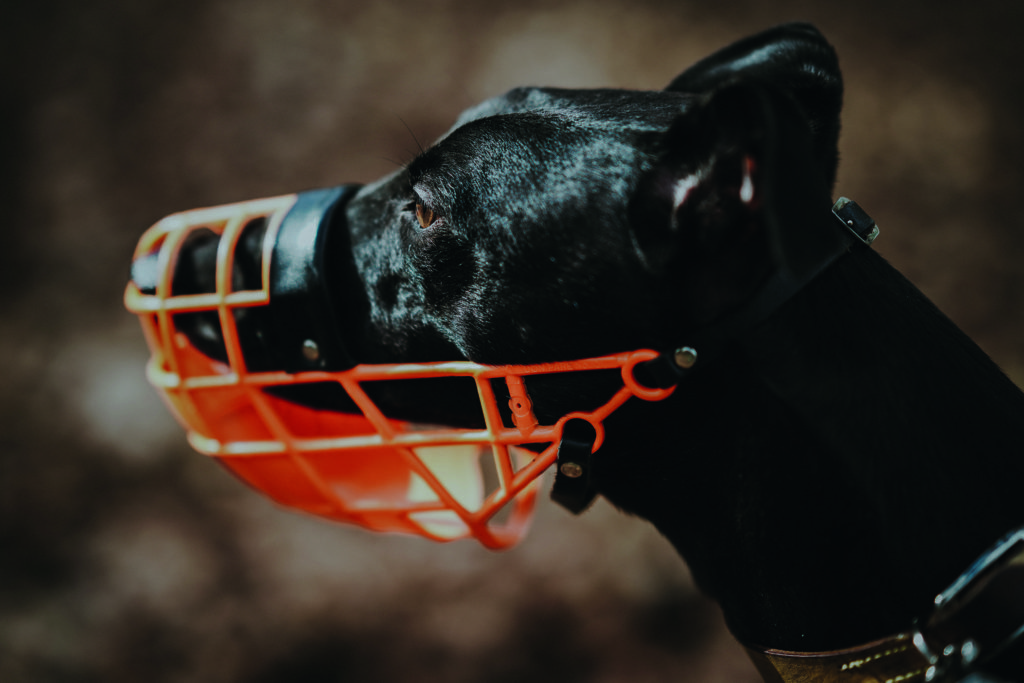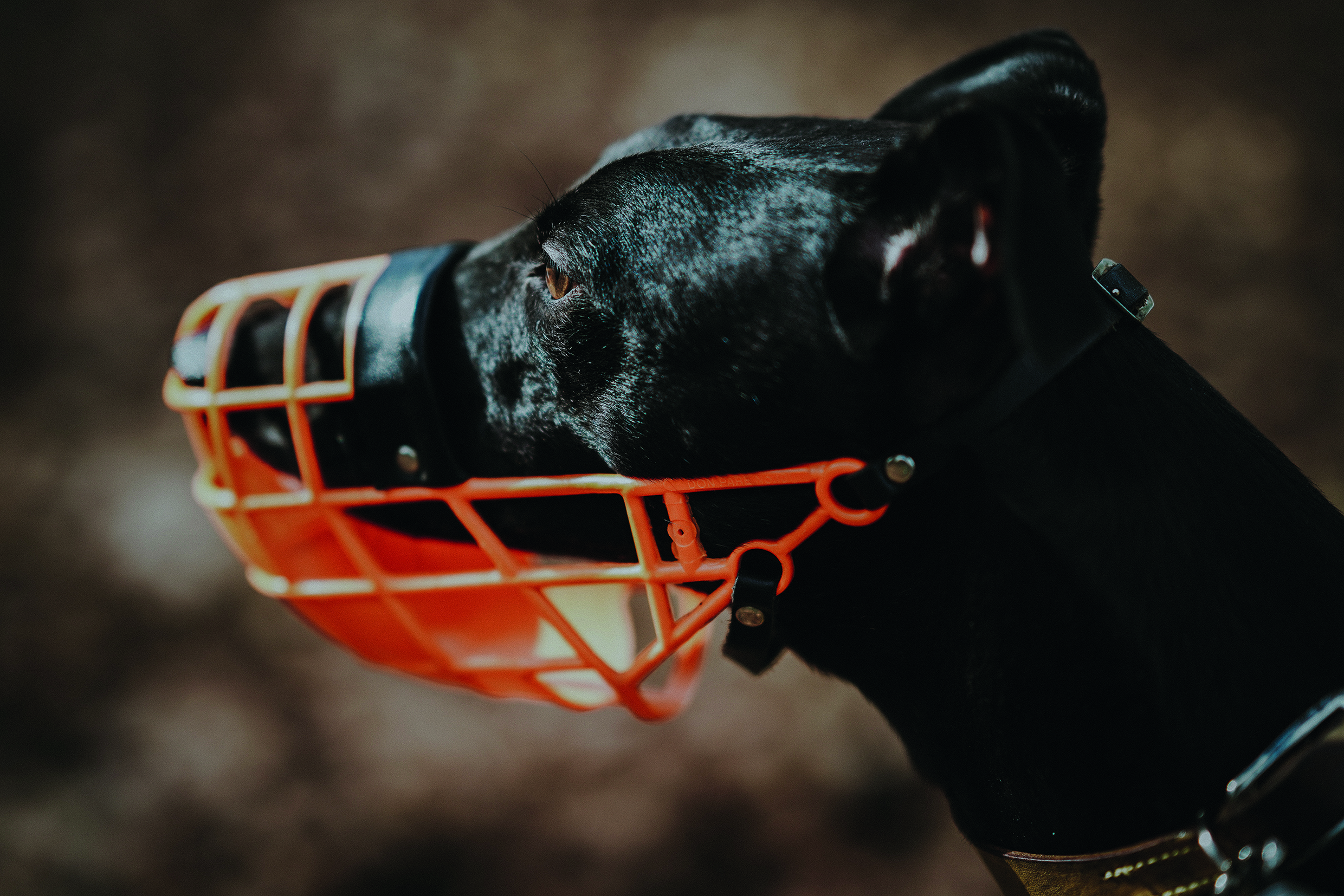
Under certain conditions even the friendliest dog can bite and a muzzle might be necessary. The very first time many dogs will ever wear a muzzle is at the vet for some sort of emergency procedure. Dogs that are frightened or in pain are much more likely to bite. Safety must come first, however sudden muzzling can make a traumatic experience even more difficult and may cause a lasting negative association for the dog, both with the vet clinic and the muzzle.
In my view, each dog should be taught to wear a muzzle as part of everyday life. This means that on the very rare occasion the dog has to be muzzled (travelling abroad or a veterinary procedure are just two examples) the dog is already relaxed about wearing one.
Muzzling can also be an important management tool as part of behaviour modification, especially in aggression cases, and for dogs that might be fearful of children or that are space- sensitive. However, even if a dog is muzzled, care should still be taken to avoid undue stress and exposure to things the dog fears or dislikes. For instance, regular muzzling of a dog that fears grooming should not be viewed as a solution; instead time should be taken to counter-condition the dog. Dogs that aggress with other dogs or humans should not be muzzled and then allowed off lead with other dogs or with humans. Even if your dog is muzzled you should make every effort to protect them from whatever triggers a fear aggressive response. In such cases, muzzling should be viewed as a short to medium term safety tool and an adjunct to behaviour modification with an expert.
The Dangerous Dogs Act, section 3, applies to every dog in the land, in public and private. It says that a dog that presents a risk is only viewed as under control if it is muzzled and on a lead. A dog does not actually have to bite to be viewed as out of control, perception by those on the receiving end of the dog’s behaviour is a factor. Read this article – every dog owner should be aware of their responsibilities in law.
Choosing a muzzle depends on the face shape of your dog. For most dogs a Baskerville Ultra muzzle is a great option and this can be used with a head collar. Properly fitted it is secure but allows your pet to pant, drink water and take treats (this last bit is vital for effective muzzle training). Dogs with very narrow heads may do better with a greyhound basket muzzle and flat-faced, brachycephalic breeds will require a specialist bull breed muzzle. Seek advice from your vet as the dog must be able to breathe and must not overheat. However, do not consider using a sleeve muzzle of the type sometimes used by vets, this is not suitable for everyday use.
Finally, how do you teach your pet to wear a muzzle? First of all, don’t force the muzzle on. Instead take days and even weeks to slowly build a very positive response to it. Start with the sight of the muzzle and reward, then have your dog retrieve treats from inside the muzzle, then reward the snap sound made by the muzzle fastener, next reward the strap fastened around the dog’s neck like a collar, then increase the duration the dog has their nose inside the muzzle, before putting it all together. Only progress each stage if the dog is relaxed and happy. Having lots of treats and rewards the dog loves is vital. The aim is to use classical conditioning so the dog has a ‘yipee’ response to the muzzle and is relaxed to wear it anywhere. For more information visit muzzleupproject.com
Leonie St Clair| www.londondogstraining.co.uk

